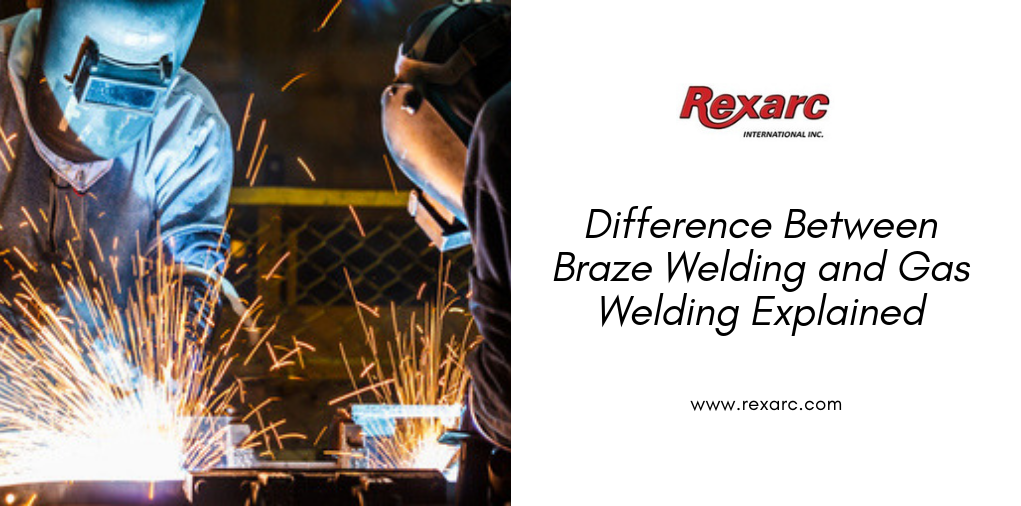Rexarc is currently open from 7:30 AM – 4:00 PM EST, Monday – Friday. Read More
Rexarc is currently open from 7:30 AM – 4:00 PM EST, Monday – Friday. Read More

Working with metals is not easy because they are reactive to heat. These metals are transformed into various shapes employing different techniques. Welding is one of these techniques, where metals are fused by the application of pressure and heat, as well as filler material. This technique has evolved over the years, and today various welding techniques are being employed. This post focuses on two such important welding techniques – gas welding and braze welding.
Braze Welding Overview
Braze welding, sometimes also referred to as bronze welding, almost resembles fusion welding. Earlier, it was only restricted to produce strong joints in bronze; however, now it is also used to produce excellent joints in cast iron, steel, copper, as well as copper-based alloys. The following are a few important features of braze welding, which differentiates it from gas welding, or acetylene gas welding, as it is referred generally.
Gas Welding Process Explained in Brief
Gas welding is a common term used to indicate a group of welding processes, where fusion takes place owing to the heating of metals to be fused. The heating is done using a gas flame, with or without the application of pressure, or with or without filler metal. The following points will help you understand this process better:
After knowing the specific processes involved in braze welding, brazing, and gas welding, you can easily make a decision on the right type. It is important that you use the right oxy-acetylene torch for both the processes. If you are planning to outsource welding, it is important that you get associated with a trusted service provider. Rexarc International Inc., is a leading provider of equipment for filling acetylene cylinders and for manifolds to distribute all types of gases.

We are a one stop shop from custom vessel production to full skidding, plumbing and instrumentation.

We stand by our processes and communicate with you on your project status as much or as little as you would like.

We continually reinvest in our people, business, and equipment technology to ship quality products on time.
